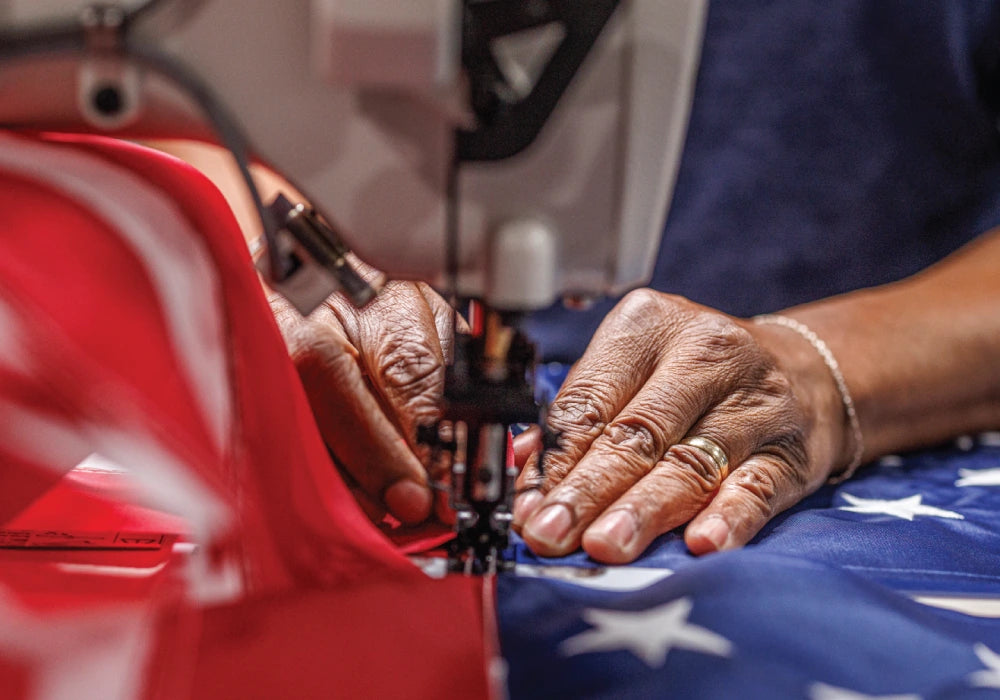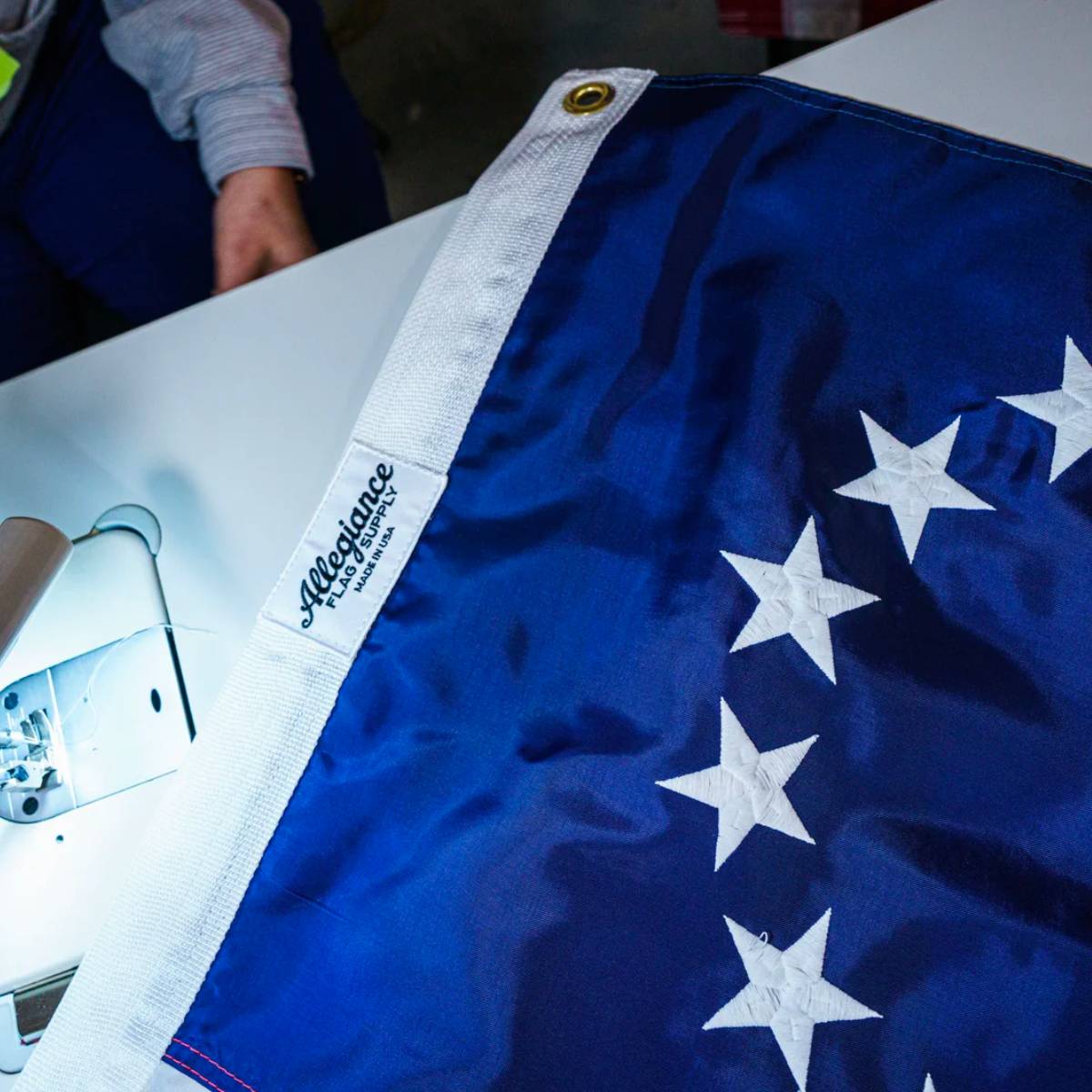The Betsy Ross American flag is a symbol of American patriotism and national identity. The flag is named after Betsy Ross, a woman who, according to legend, was asked by George Washington to design and sew the first American flag. The flag is notable for its 13 stars and stripes, which symbolize the 13 original colonies that formed the United States.

Early History of the American Flag
The American flag, as we recognize it today, is the result of a complex evolution shaped by the political, cultural, and military realities of the late 18th century. Long before the adoption of the iconic Stars and Stripes, the colonies and emerging nation experimented with a wide variety of banners, each reflecting different aspects of colonial identity, resistance, and the aspirations of a new country. During the Revolutionary era, flags were not merely decorative; they carried deep significance as tools of unity, morale, and political messaging. In the earliest days of the Revolution, colonial militias and naval forces employed a patchwork of flags, including the “Rattlesnake Flag” with its bold “Don’t Tread on Me” motto, and the “Liberty Tree” flag, which invoked the spirit of resistance to British rule. These early flags often incorporated familiar British symbols, like the Union Jack, alongside new elements that signaled the colonies’ growing sense of distinct identity and their willingness to fight for their rights.
One of the most significant pre-Stars and Stripes banners was the “Grand Union Flag,” also known as the “Continental Colors.” This flag, first hoisted on January 1, 1776, featured thirteen alternating red and white stripes representing the unity of the colonies, with the British Union Jack occupying the canton (the upper left corner). The Grand Union Flag was a powerful symbol of the colonies’ connection to Britain, even as they asserted their own collective identity. However, as the struggle for independence intensified, the need for a distinct national symbol became increasingly apparent. The confusion caused by the Grand Union Flag, which some Loyalists mistakenly interpreted as a sign of colonial surrender due to its resemblance to the British flag, underscored the need to create a flag that would unmistakably represent the new nation.
The adoption of a new flag was both a practical and symbolic decision. On June 14, 1777, the Continental Congress passed the first Flag Resolution, declaring, “Resolved: that the flag of the United States be thirteen stripes, alternate red and white; that the union be thirteen stars, white in a blue field, representing a new constellation.” This resolution established the fundamental elements of the American flag: the stripes symbolizing the original thirteen colonies and the stars representing their unity as a new constellation among the nations of the world. The choice of colors, red, white, and blue, was not arbitrary. While Congress did not initially explain the symbolism, Charles Thomson, Secretary of the Continental Congress, later clarified that white represented purity and innocence, red stood for hardiness and valor, and blue symbolized vigilance, perseverance, and justice. These values were intended to embody the ideals for which the Revolution was fought and to inspire both soldiers and citizens.
Despite the resolution, the specific arrangement of the stars and the proportions of the flag were not standardized, leading to a variety of designs in the early years. Some flags displayed stars in a circle, as seen in the popular “Betsy Ross” version, while others used staggered rows or different star shapes. This lack of uniformity reflected the decentralized nature of the Revolution itself, as states and military units often produced their own flags based on local preferences and available materials.
As the nation grew, so too did the flag. The original thirteen stars and stripes were modified to reflect the admission of new states. In 1794, the flag was updated to include fifteen stars and fifteen stripes for Vermont and Kentucky, though this design proved unwieldy as more states joined the Union. In 1818, Congress passed another Flag Act, returning the number of stripes to thirteen to honor the original colonies while allowing a new star to be added for each new state. This system has continued to the present day, resulting in the familiar fifty-star flag that flies over the United States. During the Revolutionary era, the flag’s significance extended beyond the battlefield. It became a symbol of hope and resilience for a people fighting against overwhelming odds. The sight of the flag inspired soldiers and civilians alike, serving as a reminder of the ideals of liberty, independence, and unity. The flag’s evolving design mirrored the nation’s journey from a collection of rebellious colonies to a unified republic. Its symbolism was reinforced by the sacrifices made during the war, as well as by the continued commitment to the principles enshrined in the Declaration of Independence and Constitution.
The early history of the American flag is a story of adaptation, symbolism, and nation-building. From the diverse banners of colonial militias to the adoption of the Stars and Stripes, the flag’s development reflected the changing political landscape, the desire for unity, and the enduring values of the American Revolution. Its design changes and the meanings attached to its elements continue to resonate, making the flag not only a historical artifact but also a living symbol of the American experience.
The Betsy Ross Flag Design
The Betsy Ross American flag features 13 white stars on a blue field, arranged in a circle to symbolize the unity of the colonies. The stars are surrounded by 13 red and white stripes, representing the 13 colonies that declared their independence from Great Britain in 1776. The combination of the stars and stripes is said to symbolize the unity and freedom of the American people. The design of the flag is simple yet powerful, and it has become an enduring symbol of American patriotism. The 13 stars and stripes represent the original colonies, but they also stand for the unity and freedom of all the states that form the United States.
Debate Over Historical Accuracy
The association between Betsy Ross and the creation of the American flag has long been a subject of spirited debate among historians and the public. Betsy Ross is said to have been asked by George Washington to design and sew the first American flag in 1776. According to legend, Washington, Robert Morris, and George Ross visited Betsy Ross at her upholstery shop in Philadelphia to discuss the design of the flag. They presented her with a design that had six-pointed stars, but Betsy Ross suggested using five-pointed stars, which were easier to make and more visually appealing. Washington and his companions were impressed with her suggestion, and they asked her to make the flag.
The story of Betsy Ross and the American flag is widely accepted as accurate, but there is no concrete evidence to confirm it. Some historians believe that the story was created by Betsy Ross's grandson, William J. Canby, in 1870. He claimed that his grandmother told him the story when he was a child.
Despite the lack of concrete evidence, the legend has become a popular part of American history. The story of a simple woman who played a role in the creation of the American flag has become an inspiration to many.

The Betsy Ross Flag in Modern Culture
The Betsy Ross American flag is often used as a symbol of American patriotism and national identity. It can be seen on patriotic holidays such as Independence Day and Memorial Day. The flag is also often displayed on public buildings, homes, and businesses.
The Betsy Ross flag is also used by some political groups, particularly those on the far right, as a symbol of their views. It is important to note that the flag is a symbol of unity and freedom, and should not be used to promote any kind of hate or division. The flag is also a popular item for purchase. American flag stores offer the Betsy Ross flag for purchase. It is a symbol of American pride and can be displayed in homes, offices, and other places to show support for the country.
The Betsy Ross American flag is an enduring symbol of American patriotism and national identity. Its design, with 13 stars and stripes, represents the unity and freedom of the American people. The legend of Betsy Ross and her alleged role in designing the flag adds to its significance and makes it an inspiration to many. While the authenticity of the legend is still debated, the flag remains an important part of American history. Interested in buying a Betsy Ross American flag? Discover the best U.S. flag store, Allegiance Flag Supply.
Features to Look For When Buying
It’s important to evaluate several key features to ensure you’re getting a high-quality product that meets your needs. Whether you plan to display the flag indoors, outdoors, or during special occasions, understanding what to look for will help you make an informed decision and honor the flag’s historical significance.
-
Material Quality: Choosing the right flag material is crucial for its durability, appearance, and suitability for various environments. Nylon flags are lightweight and quick-drying, making them ideal for outdoor use and vibrant displays in light breezes, while also resisting mildew and sun damage. Polyester flags offer exceptional strength and resistance to fading, tearing, and fraying, making them suitable for harsh weather and continuous exposure to intense sunlight and strong winds, ensuring a longer lifespan. Cotton flags provide a traditional, elegant aesthetic with rich, deep colors and luxurious texture, perfect for indoor presentations, ceremonial events, or historical reproductions, though they are more susceptible to moisture and sunlight damage. The best material ultimately depends on the specific climate and the flag's exposure to the elements, ensuring it both looks great and withstands the test of time.
-
Stitching and Construction: Examine the stitching and overall construction of the flag before purchasing. A well-made flag will have reinforced seams, double or triple stitching on the fly end, and securely attached stars and stripes. Embroidered stars add a touch of authenticity and durability, while printed designs may be more economical but less enduring. Quality construction ensures the flag will withstand wind, rain, and sun without fraying or unraveling, preserving its appearance over time.
-
Size and Display Options: Betsy Ross flags come in a variety of sizes, so it’s essential to select one that suits your intended display location. Standard sizes include 3x5 feet for outdoor flagpoles or smaller sizes for indoor use. Consider whether you need grommets for hanging, a sleeve for mounting on a pole, or other hardware for display. Matching the flag size to your display area ensures it will be visible and respectful, enhancing the overall presentation.
By focusing on these essential features, you can confidently select a Betsy Ross flag that not only looks great but also pays proper tribute to its historical roots. Taking the time to choose the right flag ensures it will serve as a lasting symbol of American pride and unity in your home, business, or community.

The Betsy Ross American flag endures as one of the most recognizable symbols of American history, patriotism, and unity. Though the historical accuracy of Betsy Ross’s role in its creation remains debated, the legend reflects the ideals of resilience, creativity, and independence that defined the nation’s birth. From its origins during the Revolutionary War to its enduring presence in modern culture, the flag represents both the struggles and triumphs of a young nation seeking to establish its identity and freedom. Its stars and stripes honor the original colonies while serving as a reminder of the values that continue to shape the United States: liberty, perseverance, and justice. Whether flown on national holidays, displayed in homes and businesses, or preserved as a historical emblem, the Betsy Ross flag remains a timeless tribute to America’s beginnings and the enduring spirit of its people. Choosing to display it honors history while reaffirming national pride.
Sources:
-
U.S. History. (n.d.). Betsy Ross and the American flag. https://www.ushistory.org/betsy/flagpcp.html
-
Allegiance Flag Supply. (n.d.). 3′ × 5′ Betsy Ross flag. https://www.showallegiance.com/products/3-x-5-betsy-ross-flag




